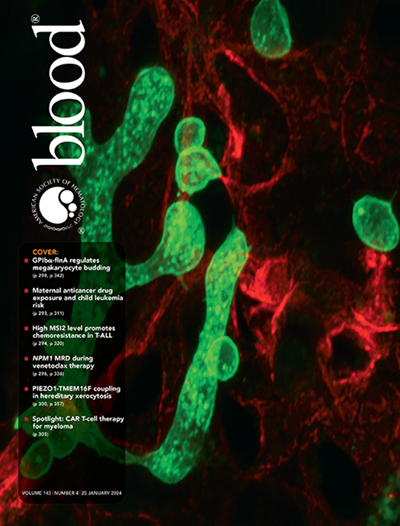接近FLT3突变型急性髓细胞白血病的治疗拐点。
IF 21
1区 医学
Q1 HEMATOLOGY
引用次数: 0
摘要
将FLT3抑制剂与强化化疗和移植相结合大大改善了急性髓细胞性白血病的预后,促使人们最近重新评估FLT3-ITD历来对预后的负面影响。治疗方法可能很快会发生重大变化,因为新出现的数据表明,最大强度化疗并不能使所有患者获益,MRD 有可能指导多种治疗选择。最后,最近的数据还表明,FLT3 抑制剂可以改变不适合接受强化治疗的患者的预后。如果得到证实,这将对适合治疗的患者产生重要影响,并可能彻底改变治疗模式。本文章由计算机程序翻译,如有差异,请以英文原文为准。
Approaching a therapeutic inflection point for FLT3-mutated AML.
Combining FLT3 inhibitors with intensive chemotherapy and transplant has substantially improved AML outcomes, prompting a recent re-evaluation of FLT3-ITD's historically negative prognostic effect. Treatment approaches may soon undergo major changes as emerging data suggest maximal intensity does not benefit all patients and MRD potentially can guide several treatment choices. Finally, recent data also suggest FLT3 inhibitors could transform outcomes in patients unsuitable for intensive therapy. If confirmed, this has important implications for fit patients and could revolutionize the treatment paradigm.
求助全文
通过发布文献求助,成功后即可免费获取论文全文。
去求助
来源期刊

Blood
医学-血液学
CiteScore
23.60
自引率
3.90%
发文量
955
审稿时长
1 months
期刊介绍:
Blood, the official journal of the American Society of Hematology, published online and in print, provides an international forum for the publication of original articles describing basic laboratory, translational, and clinical investigations in hematology. Primary research articles will be published under the following scientific categories: Clinical Trials and Observations; Gene Therapy; Hematopoiesis and Stem Cells; Immunobiology and Immunotherapy scope; Myeloid Neoplasia; Lymphoid Neoplasia; Phagocytes, Granulocytes and Myelopoiesis; Platelets and Thrombopoiesis; Red Cells, Iron and Erythropoiesis; Thrombosis and Hemostasis; Transfusion Medicine; Transplantation; and Vascular Biology. Papers can be listed under more than one category as appropriate.
 求助内容:
求助内容: 应助结果提醒方式:
应助结果提醒方式:


